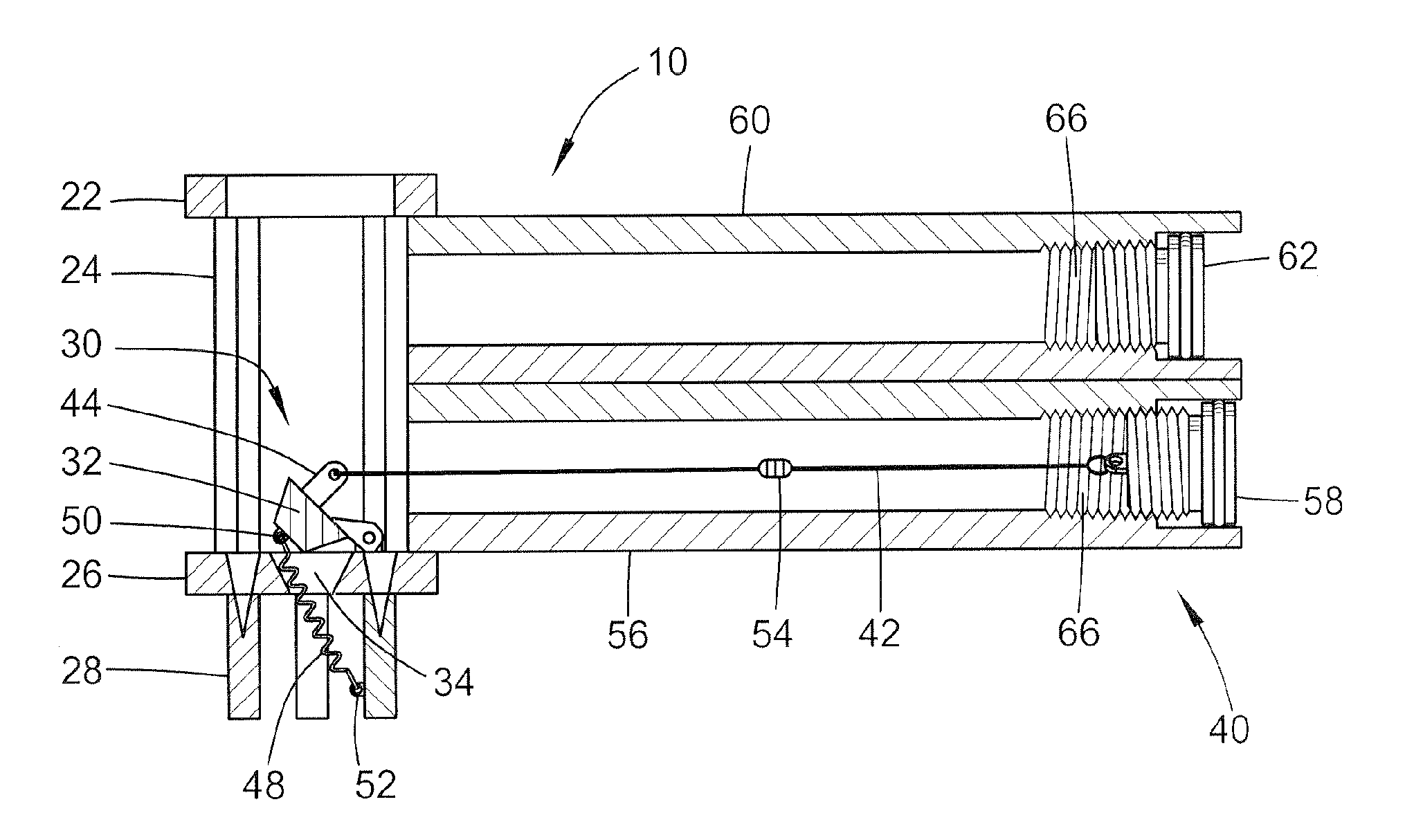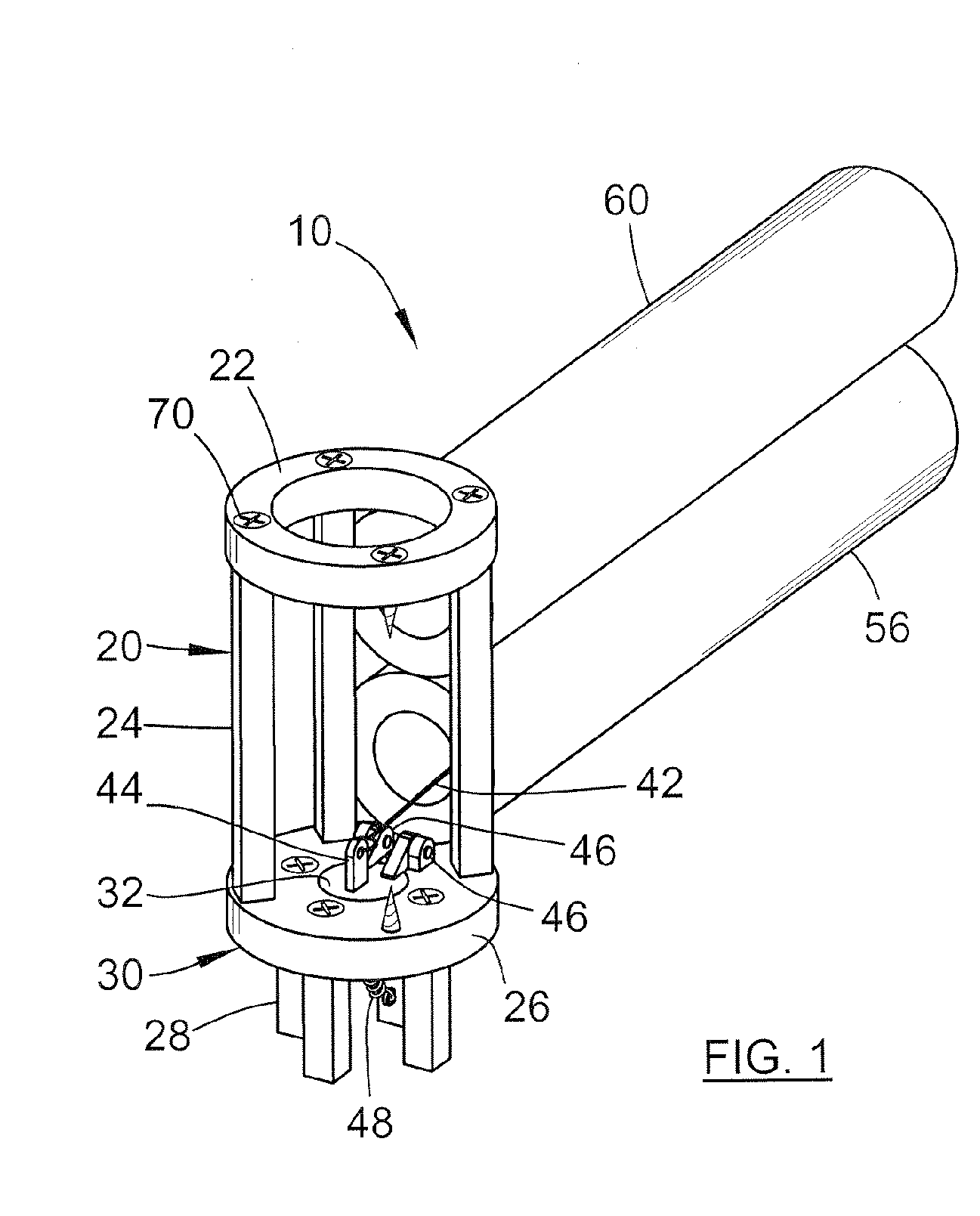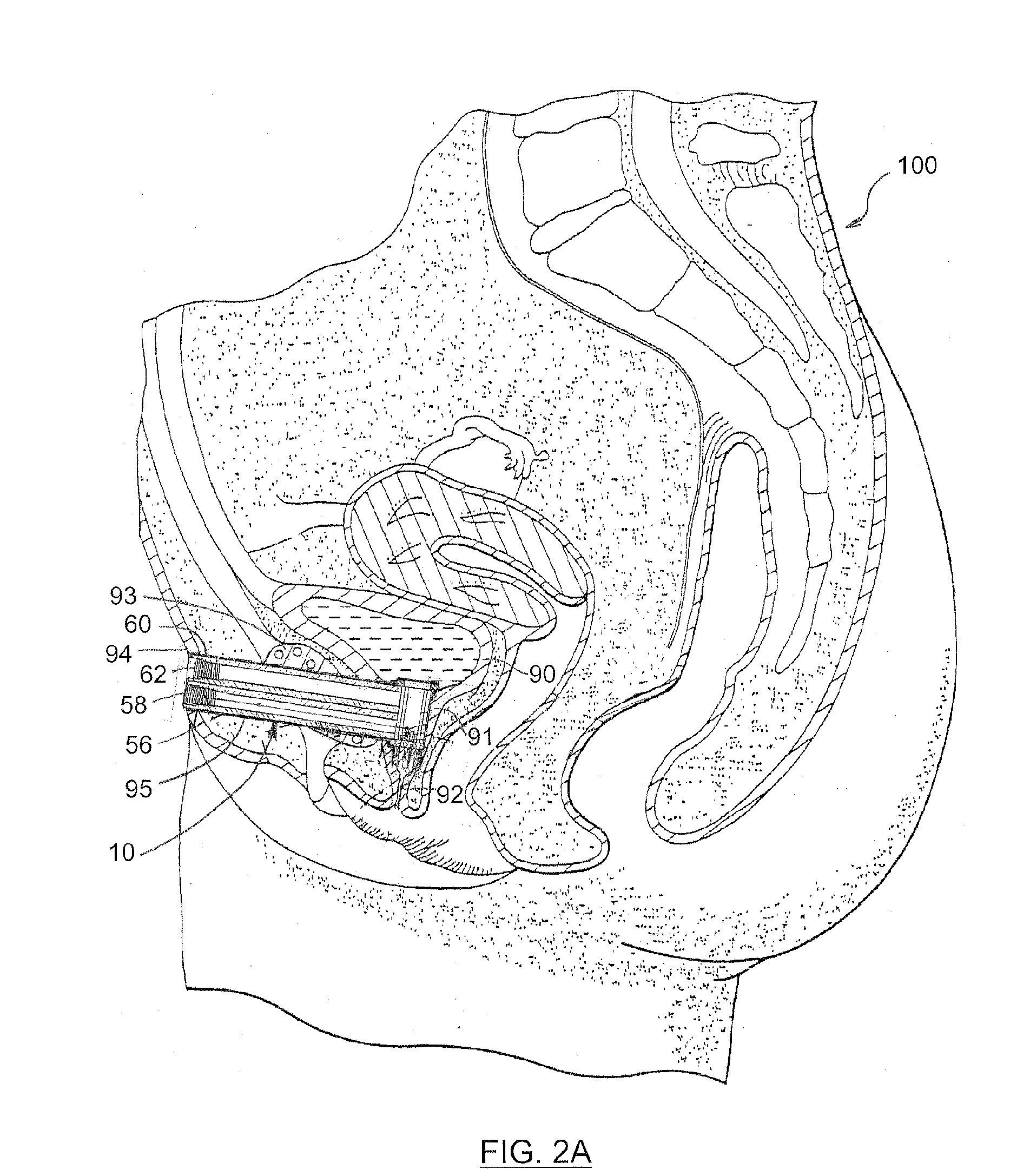Apparatus and method for correcting urinary incontinence
a technology for urinary incontinence and urinary bladder, which is applied in the field of urinary incontinence correcting devices and methods, can solve the problems of affecting the health of people, affecting all aspects of a person's life, and controlling the release and containment of urin
- Summary
- Abstract
- Description
- Claims
- Application Information
AI Technical Summary
Benefits of technology
Problems solved by technology
Method used
Image
Examples
Embodiment Construction
[0033] An embodiment of the apparatus 10 for repairing urinary incontinence is illustrated in various views in FIGS. 1 and 3-7 and is generally referred to herein as a urinary bladder valve assembly 10. The urinary bladder valve assembly 10 comprises a housing 20 adapted to be secured at least to the natural bladder of a male or female patient, a valve 30 positioned within the housing 20 and moveable between an open and a closed position, a first port 56 having a first end attached to the housing 20 and a second end extending from the housing 20 a sufficient predetermined length to reach through the abdominal wall of the patient, and a valve actuator 40 (best seen in a cross-section in FIGS. 3 and 4) at least partially positioned in the first port 56 and adapted to open and close the valve 30. In addition, the urinary bladder valve assembly 10 may further comprise a second port 60 having a first end attached to the housing 20 and a second end extending from the housing 20 a sufficie...
PUM
 Login to View More
Login to View More Abstract
Description
Claims
Application Information
 Login to View More
Login to View More - R&D
- Intellectual Property
- Life Sciences
- Materials
- Tech Scout
- Unparalleled Data Quality
- Higher Quality Content
- 60% Fewer Hallucinations
Browse by: Latest US Patents, China's latest patents, Technical Efficacy Thesaurus, Application Domain, Technology Topic, Popular Technical Reports.
© 2025 PatSnap. All rights reserved.Legal|Privacy policy|Modern Slavery Act Transparency Statement|Sitemap|About US| Contact US: help@patsnap.com



